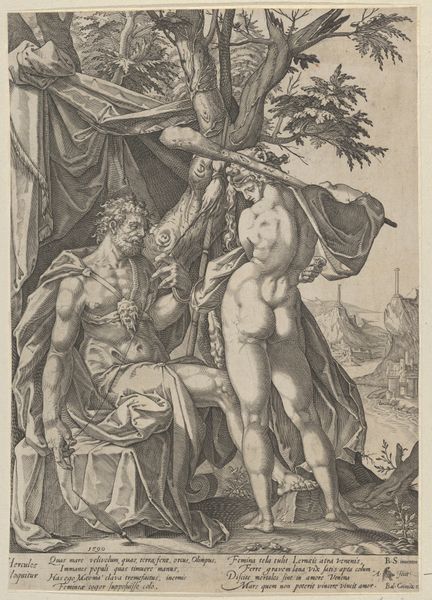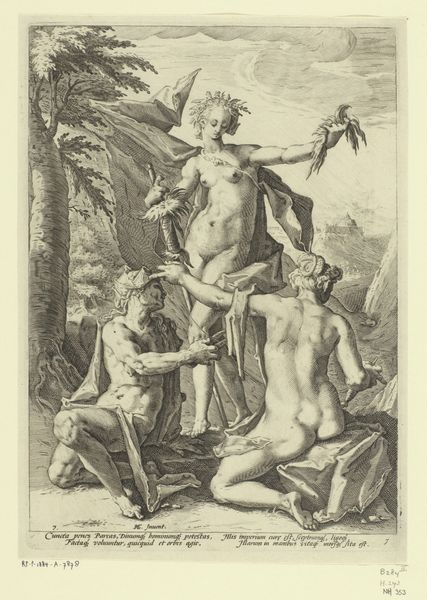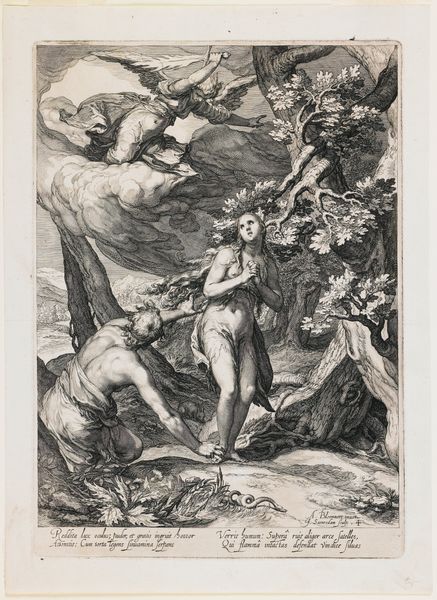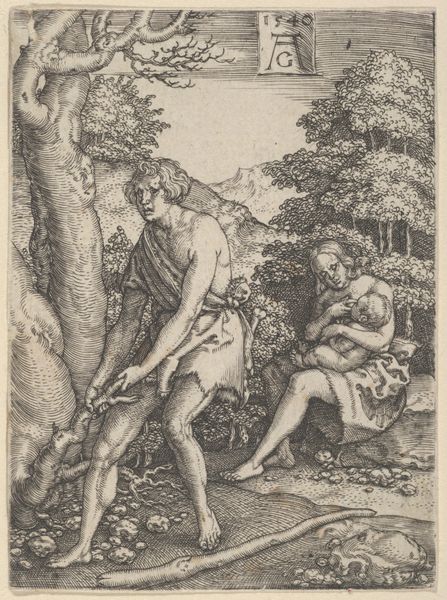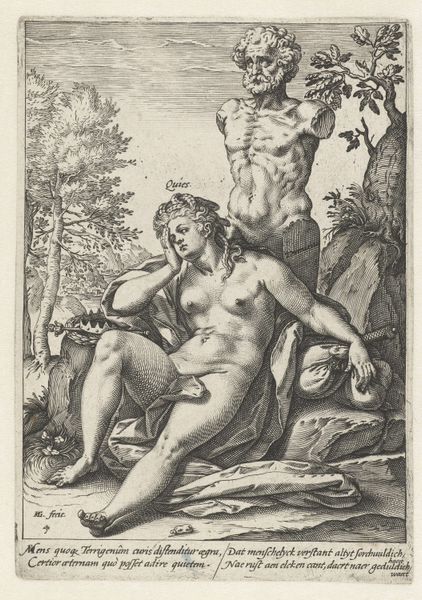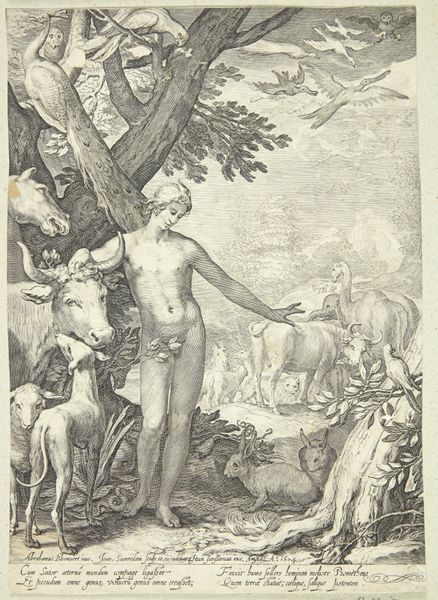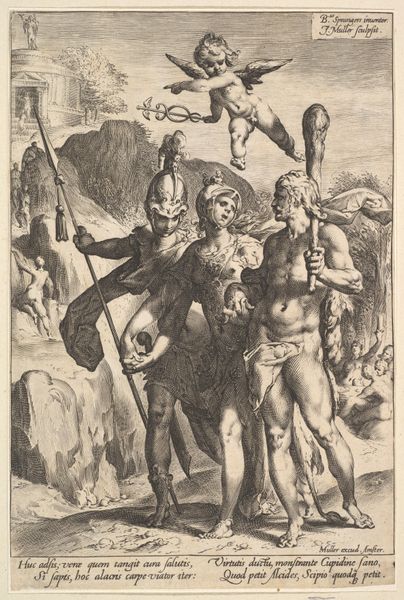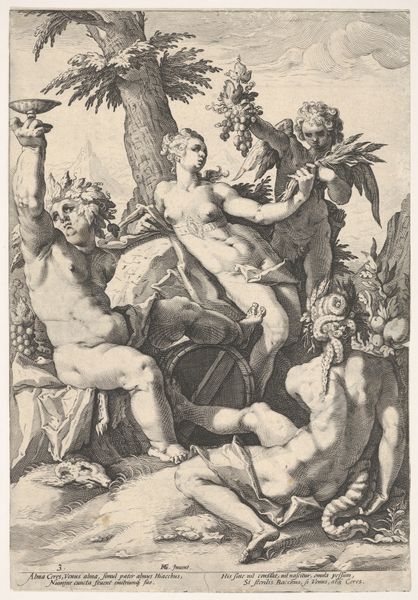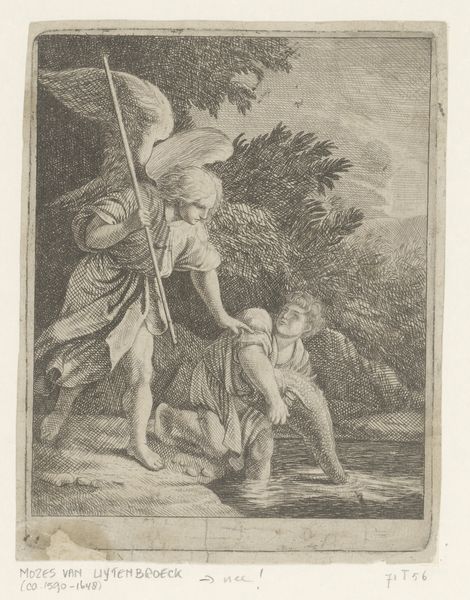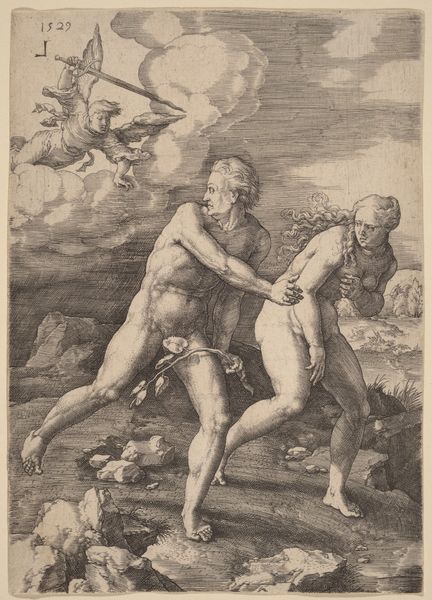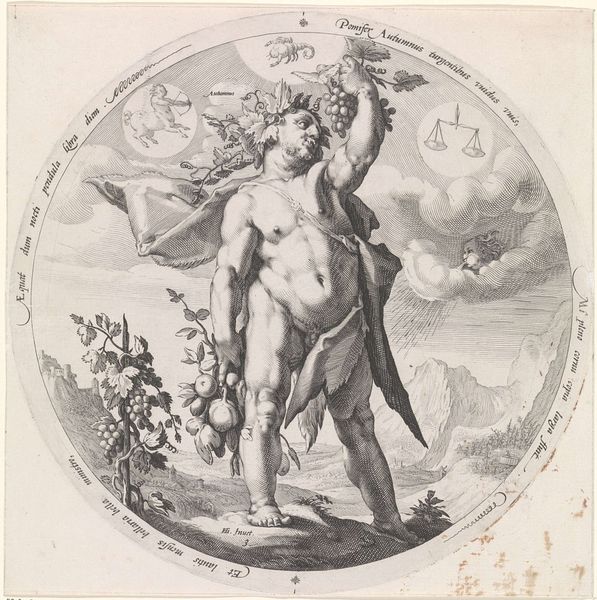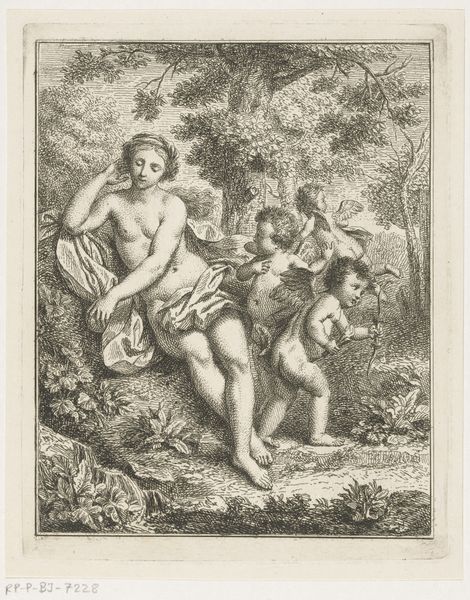
Venus Commanding Cupid to Shoot his Arrow at Pluto 1585 - 1597
0:00
0:00
drawing, print, engraving
#
drawing
# print
#
mannerism
#
figuration
#
11_renaissance
#
female-nude
#
cupid
#
history-painting
#
nude
#
engraving
#
male-nude
Dimensions: Sheet: 9 15/16 × 7 15/16 in. (25.3 × 20.1 cm)
Copyright: Public Domain
Curator: Take a moment to observe "Venus Commanding Cupid to Shoot his Arrow at Pluto," an engraving produced between 1585 and 1597 by Pieter de Jode I, now residing at the Metropolitan Museum of Art. What strikes you initially? Editor: There's a potent blend of authority and mischief conveyed through these figures. Venus, draped elegantly, exudes control, while Cupid, bow drawn, is poised to unleash an arrow of disruption, judging by Pluto and his team. Curator: Precisely! De Jode's rendering underscores the artistic skill demanded by the engraving process, requiring precise hand-eye coordination, and physical control to render the scene. Also consider that copperplate engraving involved highly skilled artisans; this was laborious work for a reproductive print, bringing designs like Spranger’s to a broader market. It's not merely about representation; it's about craft, about the value placed on skilled handiwork within the artistic marketplace of the late 16th century. Editor: Definitely. The positioning and gestures amplify the drama of this piece. Look how Venus directs Cupid with a pointed command, linking her will directly to the god of love’s arrow, influencing matters even in the underworld shown in the background with Neptune’s involvement adding maritime power and the horses pulling the god of the underworld toward the sea. She seeks control over emotion itself, while all elements—Cupid's stance, Pluto’s arrival, her determined pose, together suggest powerful transformative shifts. Curator: Moreover, this era reveled in visually complex allegories. These prints were consumed in different contexts—bound in books, decorating walls...each interaction altered the work’s value. Were they seen as decoration, educational tools, or investments? This also impacts our modern readings. Editor: Very true. This Mannerist aesthetic of this piece emphasizes symbolism over realism. The landscape also plays its role, doesn’t it? The barren rocks below contrast the life hinted at in the distance of this fraught interplay between divine wills and very raw emotional vulnerability is exposed and highlighted in equal measure. Curator: A fruitful lens indeed. Examining the material conditions, labor involved, and subsequent circulation offers distinct, illuminating perspectives. Editor: And considering how those visual and symbolic components combine allows for a deeper experience of the artists vision, don’t you think?
Comments
No comments
Be the first to comment and join the conversation on the ultimate creative platform.
